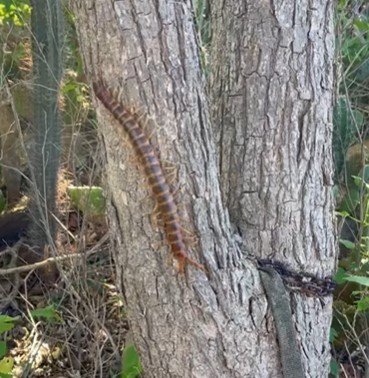The ‘Lisinbein’ (Scolopendra gigantea), also known as the Giant Centipede, is one of the largest centipedes in the world, found right here in Aruba. This fascinating creature may seem fearsome, but its role in the island’s ecosystem is invaluable.
1. Apex Predator in Aruba’s Ecosystem
Despite its intimidating size and hunting abilities, the Giant Centipede plays a crucial ecological role. As an apex invertebrate predator, it helps keep the populations of smaller invertebrates and small vertebrates in check. By doing so, it ensures that no species overpopulates and disrupts the local biodiversity.
2. A Food Source for Local Birds
The Scolopendra gigantea isn’t just a predator; it also serves as a food source for birds like the Crested Caracara (Warawara) and the Aruba Burrowing Owl (Shoco).
3. Bioindicator of a Healthy Ecosystem
The presence of the Lisinbein can indicate a healthy, balanced ecosystem. Sensitive to environmental changes, it acts as a bioindicator of ecological health, showing that Aruba’s environment is functioning properly.
4. Impressive Size and Longevity
This giant can reach up to 30 centimeters (approximately 12 inches) in length and can live for 5 to 10 years in the wild. Its size and longevity contribute to its significance in the Aruban ecosystem as a long-term player.
5. Maternal Care: A Fascinating Behavior
In Scolopendra species, the mother exhibits unique maternal care, curling around her eggs and newly hatched young. She provides protection against predators and harmful fungi, creating a safe environment for her offspring to thrive. This behavior, which continues until the young undergo their first molt, helps ensure a higher survival rate.
6. No Bark, All Bite!
The Lisinbein is known for its painful sting. While it is venomous, it is generally not aggressive toward humans unless provoked. Its role in maintaining ecological balance makes it a guardian of Aruba’s natural beauty, helping preserve the harmony of the ecosystem.
Editor’s Note: Information and photos provided by Ms. Natasha Silva from the Aruba Conservation Foundation.
Photo credits : https://www.arubatoday.com/fun-facts-about-the-lisinbein/























Discussion about this post